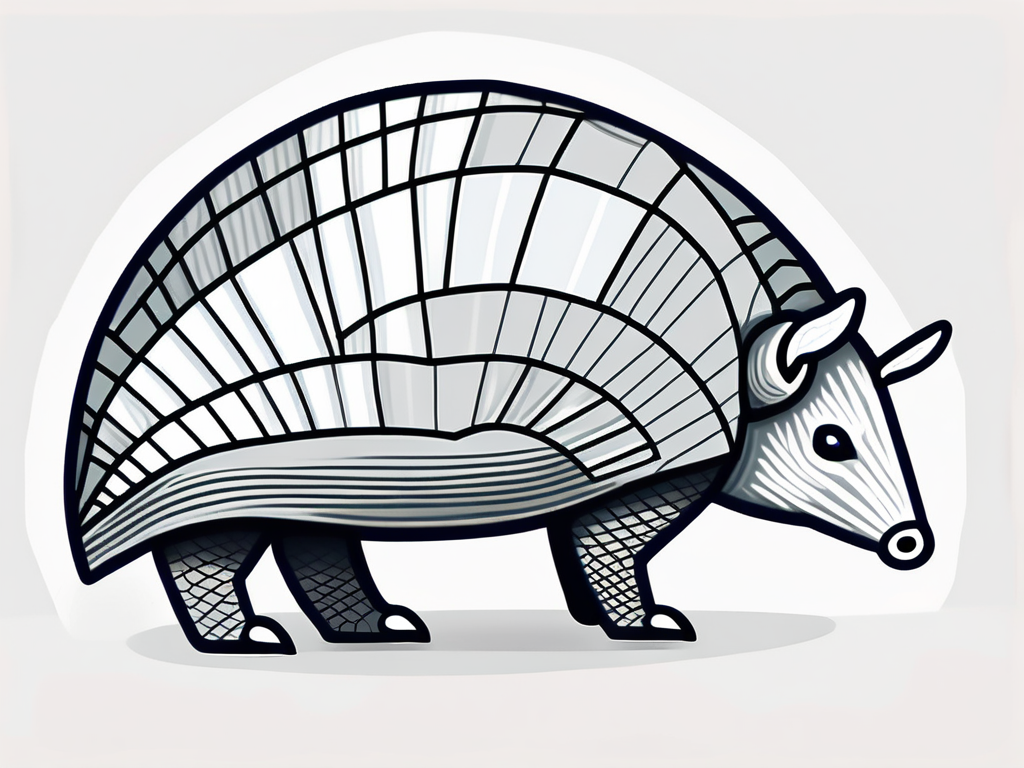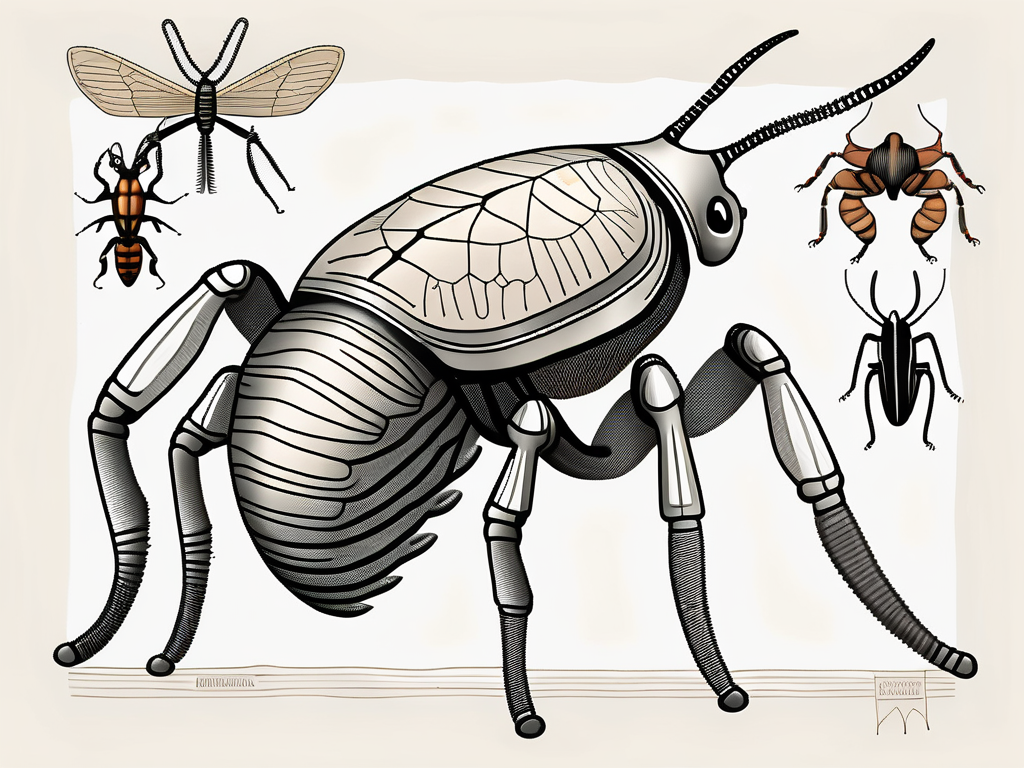Reptiles and mammals are both fascinating groups of animals that have evolved unique adaptations to survive in their respective environments. One common question that often arises is whether all reptiles have an exoskeleton, and if any mammals have an exoskeleton. In this article, we will explore the concept of an exoskeleton, the anatomy of reptiles and mammals, compare their skeletal structures, debunk some myths surrounding exoskeletons, delve into the evolution of these structures, and finally draw conclusions based on the available evidence.
Understanding the Concept of an Exoskeleton
An exoskeleton is an external skeleton that provides support and protection for an animal’s body. It serves as a framework for muscle attachment and shields the soft tissues from damage. Invertebrates such as insects, crustaceans, and spiders commonly possess exoskeletons, while vertebrates typically have endoskeletons, which are internal skeletal systems.

One fascinating aspect of exoskeletons is their incredible diversity in structure and function across different species. For example, the exoskeleton of an insect is made up of multiple layers, including a hard outer cuticle and an underlying epidermis. This complex structure not only provides protection but also plays a crucial role in the insect’s ability to grow and molt as it develops through various life stages.
Defining Exoskeleton
An exoskeleton is composed primarily of chitin, a complex carbohydrate, in invertebrates. It is a tough, lightweight material that can be molted as the animal grows. The exoskeleton consists of multiple segments or plates connected by flexible joints, enabling movement.
In addition to chitin, exoskeletons may also contain other materials such as calcium carbonate or silica, further enhancing their strength and durability. The intricate design of an exoskeleton reflects millions of years of evolution, with each adaptation finely tuned to the specific needs and challenges faced by the organism in its environment.
The Role of Exoskeletons in Animal Kingdom
Exoskeletons serve a variety of functions in the animal kingdom. They provide protection against predators and environmental hazards, serve as a barrier against desiccation and injury, and serve as a support structure for locomotion. In some species, the exoskeleton can also aid in camouflage and offer a site for muscle attachment, enhancing the animal’s strength and agility.
Furthermore, exoskeletons play a crucial role in regulating internal physiological processes such as water balance and temperature control. By acting as a physical barrier, exoskeletons help prevent excessive water loss in arid environments and maintain optimal body temperature in cold climates. This adaptive feature showcases the remarkable versatility and sophistication of exoskeletal structures in the animal kingdom.
The Anatomy of Reptiles
Reptiles, including snakes, lizards, turtles, and crocodilians, possess unique adaptations that distinguish them from other vertebrates. The skeletal structure of reptiles plays a crucial role in their overall morphology and function.
Reptiles have evolved over millions of years to thrive in diverse environments, showcasing a remarkable array of adaptations that contribute to their success. From the deserts to the rainforests, reptiles have established their presence with specialized anatomical features that aid in their survival.
The Skeletal Structure of Reptiles
Reptiles have an endoskeleton, which means their skeletal structure is internal. Their skeletons consist of bones and cartilage, providing both support and protection for vital organs.
The vertebral column of reptiles is a defining feature of their skeletal system, providing support and flexibility for various modes of locomotion. From the elongated bodies of snakes to the sturdy frames of crocodiles, the vertebral column showcases the diverse adaptations within the reptilian class.
The Presence of Exoskeleton in Reptiles
Contrary to popular belief, reptiles do not possess exoskeletons. Instead, their unique adaptations include scales, which are keratinized structures covering their skin. Scales have various functions such as protection, reducing water loss, and aiding in thermoregulation. However, they are distinct from exoskeletons.
The scales of reptiles come in a multitude of shapes and sizes, each serving a specific purpose based on the habitat and lifestyle of the species. From the bony plates of a turtle’s shell to the intricate patterns on a snake’s scales, these external structures are a testament to the evolutionary diversity of reptiles.
The Anatomy of Mammals
Mammals, including humans, cats, dogs, and whales, are a diverse group of animals characterized by their ability to nurse their young with milk and possess hair or fur on their bodies. Let’s explore the skeletal structure of mammals.

Before delving into the intricate details of the skeletal structure of mammals, it’s fascinating to note that mammals belong to the class Mammalia, which is further divided into various orders based on their characteristics and evolutionary history. From the tiny bumblebee bat to the enormous blue whale, mammals display a wide range of adaptations that have allowed them to thrive in diverse environments around the world.
The Skeletal Structure of Mammals
Similar to reptiles, mammals also have an endoskeleton composed of bones and cartilage. The mammalian skeletal system provides structural support, allows for movement, protects vital organs, and serves as a site for muscle attachment.
Furthermore, the skeletal structure of mammals is intricately connected to their unique modes of locomotion. For instance, the long and powerful limbs of cheetahs are adapted for high-speed chases, while the wings of bats are modified forelimbs that enable them to fly. These specialized skeletal adaptations highlight the incredible diversity and versatility found within the mammalian class.
The Possibility of Exoskeleton in Mammals
While it is not common for mammals to have exoskeletons, there are some exceptions. Certain groups of mammals, such as armadillos and pangolins, possess dermal armor, which can resemble an exoskeleton. Their unique adaptations provide protection against predators.
It is intriguing to consider how these rare instances of exoskeletons in mammals have evolved in response to specific ecological pressures. The armored plates of armadillos, for example, are composed of bony deposits covered by tough keratinized scales, offering a formidable defense mechanism against threats in their environment. This adaptation showcases the remarkable evolutionary solutions that have emerged within the diverse world of mammals.
Comparing Reptiles and Mammals
Despite the differences in their anatomy, reptiles and mammals do share certain similarities in terms of their skeletal structures.
When delving deeper into the skeletal structures of reptiles and mammals, it is fascinating to note that both groups have evolved unique adaptations to suit their respective lifestyles and environments. These adaptations have allowed them to thrive in diverse ecosystems around the world.
Similarities in Skeletal Structures
Both reptiles and mammals have a vertebral column, skulls, limbs, and ribs. These common skeletal elements contribute to their overall body structure and aid in various functions such as locomotion and protection.
Furthermore, the presence of these shared skeletal features highlights the evolutionary relationships between reptiles and mammals, showcasing how certain anatomical traits have been conserved over millions of years.
Differences in Skeletal Structures
Reptiles typically have more elongated and sprawling limb structures compared to mammals, allowing for different types of movements. Mammals, on the other hand, exhibit a wider range of limb adaptations, including specialized limbs for running, swimming, and climbing.
These differences in limb structures between reptiles and mammals are a result of their distinct evolutionary paths and ecological roles. Reptiles, with their sprawling limbs, are well-suited for crawling and slithering, while mammals have diversified their limb morphology to excel in various modes of locomotion, reflecting their adaptability to different habitats.
Debunking Exoskeleton Myths
There are several misconceptions surrounding the presence of exoskeletons in both reptiles and mammals. Let’s address some of these myths.
Exoskeletons are external skeletons that provide structural support and protection to various invertebrates such as insects, crustaceans, and arachnids. These rigid outer coverings are made of chitin, a tough and flexible protein that allows for movement. In contrast, vertebrates like reptiles and mammals have endoskeletons, internal frameworks of bones that support their bodies.
Common Misconceptions about Reptile Exoskeletons
While reptiles do not possess exoskeletons, their scales often lead to the misconception that they have external skeletons. It is important to differentiate scales from exoskeletons, as they serve different purposes and have distinct structures.
Reptile scales are specialized structures made of keratin, the same protein found in human hair and nails. These scales provide protection, aid in camouflage, and regulate body temperature. Unlike exoskeletons, scales do not molt or grow with the animal, but rather remain relatively constant in size throughout the reptile’s life.
Common Misconceptions about Mammal Exoskeletons
Misunderstandings regarding mammal exoskeletons stem from unique adaptations exhibited by certain species such as armadillos and pangolins. Although they have protective dermal armor, it is not a true exoskeleton. These adaptations have evolved independently.
Armadillos possess bony plates covered in tough skin, providing defense against predators. Pangolins, on the other hand, have overlapping keratin scales that form a protective armor. While these features may resemble exoskeletons in function, they are structurally different from the exoskeletons found in invertebrates.
The Evolution of Exoskeletons
The evolution of exoskeletons is a fascinating topic that offers insights into the history of animal life on Earth. Exoskeletons, external skeletons made of chitin or calcium carbonate, have played a crucial role in the survival and success of numerous species throughout evolutionary history. These rigid structures serve as a protective armor, offering defense against predators and environmental stressors.

One of the earliest known exoskeletons belonged to trilobites, marine arthropods that dominated the oceans over 270 million years ago. Their intricate exoskeletons not only provided protection but also facilitated movement and buoyancy control in the ancient seas. The diversity of exoskeletons seen in modern arthropods, such as insects, crustaceans, and arachnids, showcases the adaptive nature of these structures in different environments.
The Evolutionary Purpose of Exoskeletons
Exoskeletons have evolved independently multiple times across different animal groups. The primary selective pressure driving the evolution of exoskeletons is likely the need for protection against predation and the harsh environment. They provide advantages such as mechanical support, selective permeability, and defense that aid in survival and reproduction.
Furthermore, exoskeletons have also been linked to the regulation of water loss in terrestrial arthropods, preventing desiccation in arid environments. The evolution of specialized structures within the exoskeleton, such as sensory hairs and chemical receptors, has enabled species to interact with their surroundings effectively, enhancing their chances of survival.
How Exoskeletons Have Changed Over Time
Exoskeletons have undergone significant changes throughout evolutionary history. They have become more complex and specialized, adapting to different ecological niches and environmental conditions. Detriments associated with exoskeletons, such as limitations on growth and mobility, have been mitigated through various mechanisms such as molting and joint modifications.
Moreover, the fossil record provides valuable insights into the evolution of exoskeletons, revealing transitional forms and adaptive changes in response to shifting environmental pressures. From the armored plates of ancient trilobites to the delicate wings of butterflies, exoskeletons continue to showcase the remarkable diversity and resilience of life on Earth.
Conclusion: The Truth about Exoskeletons in Reptiles and Mammals
In conclusion, it is evident that not all reptiles have exoskeletons, and while rare, some mammals exhibit adaptations that resemble dermal armor. Scales in reptiles and dermal armor in specific mammals must not be misinterpreted as exoskeletons. The presence and purpose of exoskeletons differ among different animal groups, and its evolution represents a remarkable testament to nature’s adaptive capabilities.
Summarizing the Facts
To summarize, reptiles have endoskeletons consisting of bones and lack exoskeletons. Mammals, too, possess endoskeletons, although certain species may exhibit dermal armor that resembles an exoskeleton. These adaptations provide unique advantages for survival.
Future Research Directions in Exoskeleton Studies
While we have gained substantial knowledge about exoskeletons, there is still much to uncover. Further research could focus on understanding the molecular mechanisms underlying the development and maintenance of exoskeletons, exploring the structural and mechanical properties of various exoskeletal adaptations, and investigating how exoskeletons influence behavior and ecological interactions.
By shedding light on the topic of exoskeletons in reptiles and mammals, we hope to foster a deeper understanding of these fascinating animals and their remarkable adaptations.
